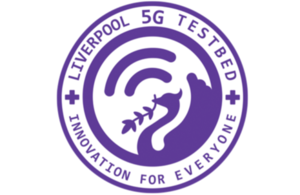Liverpool 5G Testbed
This health and social care testbed saw a group of organisations working together to reduce the digital divide

Liverpool 5G
The Liverpool 5G Testbed was the first health and social care testbed in the 5G Programme. The project managed to successfully build a low cost, publicly-owned 5G network to provide affordable connectivity in a disadvantaged area of Liverpool. It also demonstrated high-quality healthcare applications and devices that could deliver both substantial cost savings to health providers as well as improved health and quality of life to its users.
Key findings
- The project successfully deployed a publicly-owned, operational network in the Kensington ward of Liverpool. This network provided improved connectivity to target houses and other facilities (e.g. care homes).
- The project created the largest 5G mmWave mesh network in the UK and second largest in the world, using the city council’s fibre CCTV ring and lamposts for the backhaul. Using wireless 5G backhaul is a huge advantage as it avoids digging up roads in urban areas.
- The use cases that were tested showed the potential for growth and investment in the local, digital economy.
- There are 8.8 million people who are unpaid carers in the U.K. This testbed offers an example of how technology like this could be used to help the reduction of loneliness in people feeling socially isolated.
- The project received further Government funding (£4.3 million) in the 5G Create competition. The Liverpool 5G Create project will stimulate the development of low-cost 5G technology as well as improving future pandemic resilience and reducing inequalities.
Use cases
-
The CGA Simulation social gaming app allowed users to meet with others online to chat and play games online to combat loneliness. Data demonstrated:
- Reduced loneliness: Of the 49 participants there was over 25% reduction in those who felt often or sometimes lonely.
- Increased quality of life: Worth over £8,000 per person.
-
Push to Talk device was used to connect individuals receiving social care with local communities, to reduce loneliness. Users were connected via their phone to another user who has also pushed their button. At the end of the project, the data showed:
- Reduced feelings of loneliness: 75% increase in those saying they hardly felt left out.
- Decreased GP use: Average number of GP visits dropped by over 15%.
-
Safehouse Technologies used Internet of Things (IoT) type sensors over a private 5G network to monitor living conditions of vulnerable users. Sensors were used to send alerts and notify the community (friends, family, and professional carers) via a mobile application. The results demonstrated:
- Reduced Time burden for carers: Average 5 hour reduction per carer.
- Fewer Visits to GPs: Over 10% reduction in total GP visits.
- Fewer visits to hospital: Over 40% decrease in hospital attendance.
- Increased quality of life reported life satisfaction, worth over £4,000 per person.
-
Paman (medication adherence) provided on-call access to a pharmacy assistant for vulnerable people in their own home. Users were monitored taking their medication via a 4k video link during an allocated slot, ensuring the medicines are taken correctly.
- Fewer medical errors: Over 50% reduction in people given the wrong medication or taking the wrong dosage.
- Medication adherence levels: 95% (this is 40% higher than the national average of 55%).
- Fewer visits to hospital: 60% reduction in those attending hospital.
- Fewer GP visits: Reduction of over 30% in the number of people who visited their GP and an over 15% drop in the average number of visits per user.
- Reduced time burden for care workers: Saved over 300 hours per person per year, that requires support taking medication.
- Overall cost savings : Administering this service led to cost savings of over £2,000 per user per year. Reduction in GP visits could lead to potential cost saving over £2,000 per 100 users per year.
- Increased quality of life reported life satisfaction, worth over £5,000 per person.
- Telehealth in a box (Virtual Reality pain relief) - This use case explored how 5G could be used in assistive technology to support early discharge of patients from hospital and into their own homes. VR headsets were used as a distraction in palliative care for pain management. This, however, was inconclusive.
Blog: How the Liverpool 5G Project helped bridge the health gap during Covid19
Reports
- Liverpool 5G Health and Social Care Testbed: Benefits Outcomes and Impact (November 2019) - This report outlines the data and benefits from the different use cases in the project and how they benefited the users during the trial.
- Liverpool 5G Health and Social Care Testbed: Developing the Network (January 2020) - This report outlines the planning, installation and deployment of the network and how it was managed throughout the project.
- Liverpool 5G Health and Social Care Testbed Overview (January 2020) - An overview of the project, including rationale, how the project was executed and key learnings from the data of the use cases.
- "Push to Talk" Prototype Rebuild and LoRaWAN Connection - An in-depth analysis of the ‘Push to Talk’ device, which was used to connect users to reduce loneliness.
- Using 5G Technology to Improve Digital Health and Social Care Applications - Final presentation providing an overview of the project and its findings.
- Other publications can be found on the Liverpool 5G Testbed website.
Project Partners
- Sensor City (Lead) - Liverpool
- Royal Liverpool and Broadgreen University Hospital NHS Trust
- DigiCreDis
- eHealth Cluster
- CGA Simulation
- Amazon Web Services
- Liverpool John Moores University (LJMU)
- Inventya
- Liverpool City Council
- Blu Wireless
- AIMES
- DefProc Engineering
- The Medication Support Company
- Safe House
- Number of local social care providers
More information on the project can be found here.
Updates to this page
-
Updated case study
-
First published.